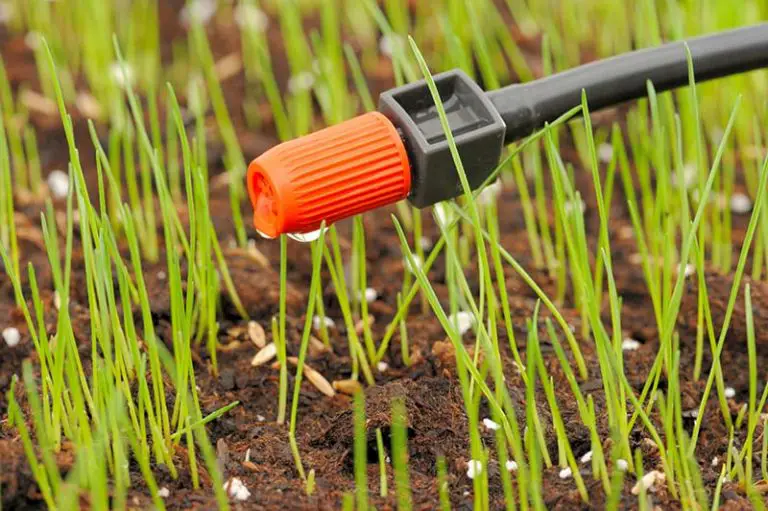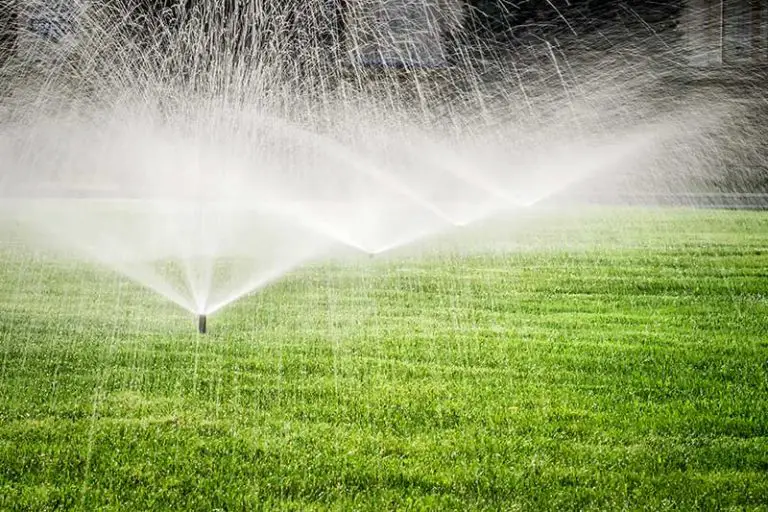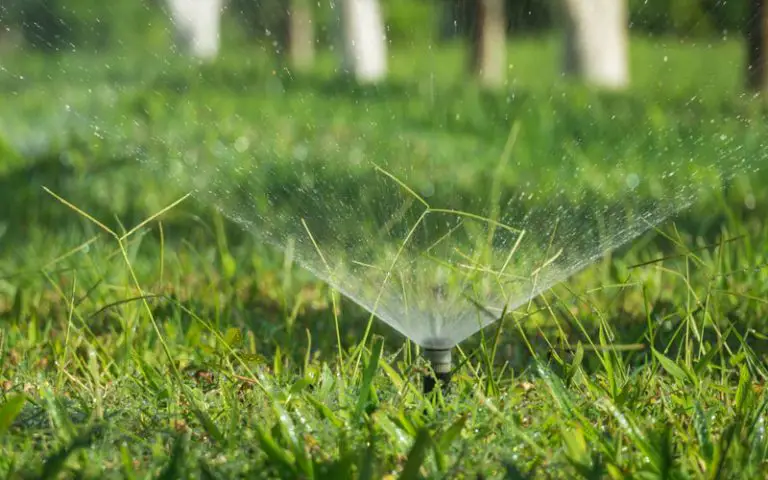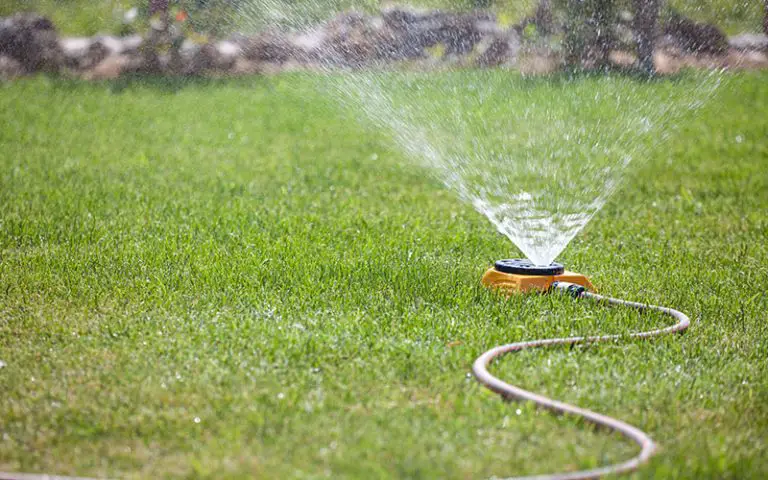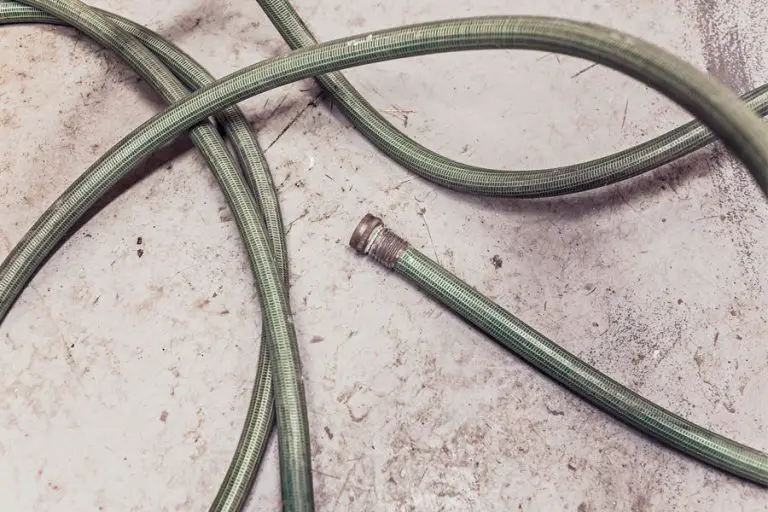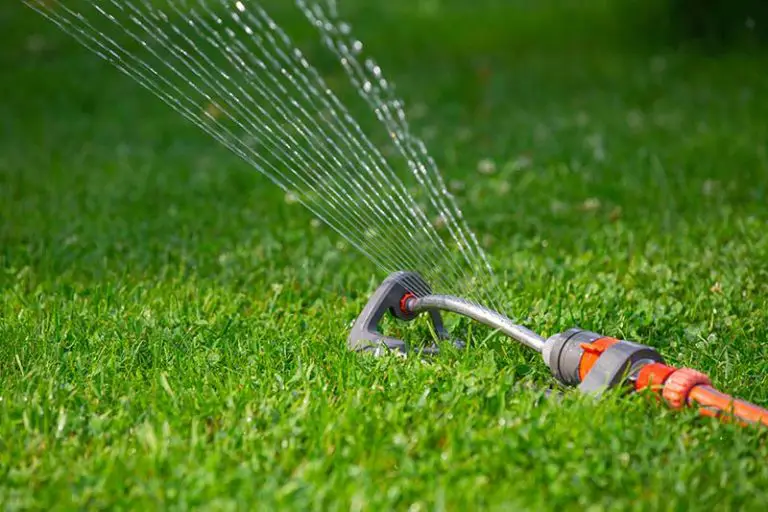How to Drain a Sprinkler System
Knowing how to drain your sprinkler system successfully is an important part of winterizing it or preparing it for long periods of disuse.
Draining a sprinkler system consists of several steps in order to remove as much water as possible from the interior. Leaving water inside a sprinkler system for long periods of disuse can result in damage or further issues along the line.
Why Should I Drain my Sprinkler System?
Draining a sprinkler system should be an annual task, especially if you live in an area which is likely to see cold snaps throughout winter. If not, a sprinkler system should be drained each time it is going to be disused for an extended period of time.
There are various reasons why a sprinkler system should be drained before winter or long periods of unuse. The main reason is that leaving water inside could potentially lead to damage. Water inside a sprinkler system can be particularly damaging if left during a cold snap, as water expands as it freezes. This can lead to broken pipes, broken sprinkler heads, and can lead to leaks that occur once the ice melts. These leaks can in turn lead to puddles of standing water on the lawn.
Standing water inside the sprinkler lines can also be a breeding ground for pathogens that could potentially damage or weaken your lawn in the long run. Organisms such as fungi prefer warm, damp conditions and can thrive in areas which have an abundance of standing water.
Sprinkler systems should also be drained if any maintenance is being made to them. This includes adding or adjusting sprinkler lines. It is easier, and much more comfortable making any changes to your system whilst the system is drained and dry.
When Should I Drain my Sprinkler System?
Your sprinkler system should be drained annually before the start of winter. This prevents any water inside from freezing up and potentially damaging the system. Whilst it’s important to do this annually, there are other times which may require a full system drain. For instance, if you are planning on not using your system for a while, for whatever reason, it’s best to ensure that it is clear and empty to prevent any harmful organisms from living off the standing water left inside the pipes.
Sprinkler systems are usually drained towards the end of fall, when winter is about to begin. They can oftentimes be drained earlier, however, as by this point the climate usually becomes wetter and rainier regardless, limiting the need for irrigation systems.
How to Drain a Sprinkler System
Draining a sprinkler system can be completed in an afternoon if the correct steps are taken in order to complete the task.
Of course, not all sprinkler systems are the same, and you should consult your manual when conducting maintenance. Whilst these steps are generalized, you may find that one or two steps may be different in regards to your system.
There are two main ways to drain a sprinkler system, using either an automatic or manual drain valve. Most high-end lawn sprinkler systems are built with an automatic drain valve installed, but there is still a possibility that yours might be manual. Make sure to make appropriate adjustments regarding which type of drain valve you have installed in your irrigation system.
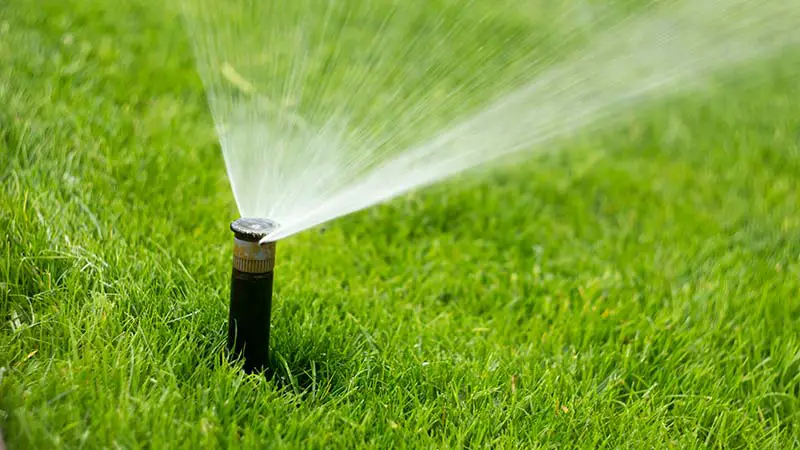
Automatic Drain Valve
If you have an automatic drain valve, the process may be easier and quicker for you.
Turn off the Water Supply
Turn off the main water supply to the irrigation system. This usually consists of turning the main valve of the irrigation system to ensure that it’s closed off. Pressure should fall, leaving the water to begin to drain automatically.
Open Drain Cap
Open the drain cap, allowing for excess water to begin to flow out. This drain cap is usually located between the main valve and backflow device. The opening of this drain cap is used to empty this stretch of piping.
Adjust Sprinkler Heads
Some water may still be trapped within the sprinkler heads. This should be removed, as ice can easily break sprinkler heads as it expands. To dry the sprinkler heads out, you can either remove them and dry them, or simply lift each head and allow the water to drain out. This, of course, depends on the type of sprinkler heads you have installed.
Manual Drain Valve
A manual drain valve may require more steps to empty, but it may provide better results.
Find the Manual Drain Valves
The manual drain valves are usually located at the end of each zone valve. If you have forgotten, or cannot find these valves, there are ways you can locate sprinkler lines to assist you.
These valves are often located at the bottom point of the sprinkler system, as it is where water collects once the system is not in use.
Turn off the Water Supply
Once the manual drain valves are found, turn the water supply to the system off.The valves used to turn the water supply off are close to the beginning of the system, near the control box.
Open the Manual Drains
Once the main water supply valve is shut off, you can open all of the manual drains to allow for water to be released. The draining of this water may not be a quick process, and may require several days of keeping the valves open to allow for leftover water to evaporate. This is why it is important to drain a sprinkler system during a dry period, as it prevents new rainwater from entering the system before a cold snap begins.
Open Additional Valves
Water may still be hiding in your system. Make sure to open other valves further upstream to ensure that water that hasn’t previously pooled to the bottom of the system can find its way out.
Check Sprinkler Heads
Lift or remove each sprinkler head to ensure that no water is still trapped inside. You can also clean the sprinkler heads during this process to ensure that they are not blocked and will be working their best once they are put back to use.
Capping off sprinkler heads can protect them during times of disuse, such as winter.
Close all Drain Valves
Once you are satisfied with the steps taken to drain your sprinkler system, you can take the time to close all the drain valves. This will prevent any water from finding its way back into the system if it rains before the system is refilled.
Additional Steps to Drain a Sprinkler System
There are a few other steps you can take to help drain the sprinkler system to prepare it for a period of unuse. One of these ways is to blow out the system, by forcing air throughout the lines to effectively break up and blow away any excess water that may still be lingering.
In order to do this, you will need:
- Air compressor
- Air hose
- A hose adapter
Be sure to check what force of air your system will be able to sustain, as too much pressure could damage the system in a similar way that ice would. If unsure, it’s best not to undertake this method.
When setting up your compressor, it’s important to consider the size of both your compressor and the sprinkler system. It’s most likely impossible to blow out the entire system at once, regardless of the size of the compressor, so some modifications need to be made.
Most people choose to blow out certain zones at a time. This involves opening and closing certain zones via the valves built into the system, in order to maximize the amount of power which the compressor will exude.
Your compressor should be used at approximately 50psi to ensure your sprinkler system remains unharmed.
Make sure the valves are closed on the backflow preventer, as the air compressor may damage it if the valves aren’t closed off. Remove the plug from the blowout port, replacing it with the air hose adapter. This step allows for the compressor to be attached to the unit, allowing the air to pass through.
Blow out the zone that you are focusing on. Watch as the sprinkler heads spit water and as soon as they run dry, stop using the compressor. Continue this with each zone until all sprinkler heads have run dry.
Final Thoughts
Draining a sprinkler system is a maintenance task that may be easily forgotten about, but it is incredibly important to undertake. This is to ensure that no damage is taken by the irrigation system, which can easily be damaged by standing water or ice as it expands.

